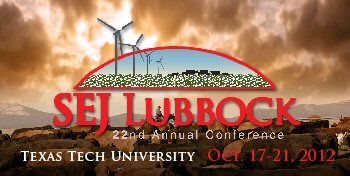What do you do when even war heroes can’t take it any more?
A year after surviving a fierce battle in Afghanistan, Medal of Honor
recipient Dakota Meyer put a pistol to his head and pulled the trigger. He was
shocked that it didn’t fire, the highly decorated Marine wrote in a
soon-to-be-released memoir, Into the Fire.
“That right there was rock bottom,” Meyer, 24, said at a
friend’s home in New Jersey
in a recent interview with Military Times. Meyer said he pieced his life back
together with treatment for post-traumatic stress and decided to write and talk
about his despairing grab for a gun he kept in his pickup truck.
Had he died of a self-inflicted gun shot one dark night in Kentucky, Meyer would
have joined the long grim line of suicides among military veterans and active
duty troops. The suicide rate among active duty troops is roughly one death per
day, with a big jump in July in the Army, according to military reports.
Meanwhile, military veterans have been committing suicide at a furious clip of
about 18 per day, according to the Department of Veterans Affairs.
How to stop an epidemic of suicides has baffled military and
VA leaders. Now everyone from former soldiers to President Obama is weighing in
on a tragedy that for a long time was seldom talked about in public.
The total number of U.S. military deaths by suicide since
2001 is now more than 2,600—eclipsing the roughly 2,000 military fatalities in
Afghanistan, Time magazine recently noted in a front page special report. Of
4,486 US military deaths in Iraq,
how many were self-inflicted was not determined by Time, but it is a
substantial portion, as military suicides started climbing during the height of
the war there.
Another sign of the scope of this tragedy is that the “VA’s
crisis line has fielded more than 600,000 calls from suicidal veterans,
active-duty troops or their family members in the last five years, with the
numbers steadily increasing each year,” Stars and Stripes reported in June. “While
agency officials tout the figures as a success, they also show the inner
anguish tormenting many of those in the military community.”
Despite a growing network of hotlines and post-traumatic
stress counseling programs, instituted in response to concerns that many
soldiers have done multiple deployments in Iraq
and Afghanistan,
the root cause of suicides by soldiers and veterans is still unclear, VA
Secretary Eric Shinseki said at a national suicide prevention conference in
June.
. “’Resiliency’ programs such as Battlemind, Comprehensive
Soldier Fitness and similar initiatives have their supporters, but to date,
these programs have not had a clear impact on the problem,” Bret A. Moore, a
psychologist who served in Iraq, wrote in a recent Military Times column. Moore asked veterans to
write in with suggestions on what to do.
“The answer is simple: There is simply not enough support
for troops suffering with depression,” Moore
wrote in the current issue of Military Times, summarizing some of the emails he
received from veterans. Another big piece of the problem is how troops are
treated by people in command and by fellow soldiers.
The Marine Corps is court-martialing a Marine who slit his
wrists in Okinawa—a punitive action that
hasn’t put a damper on the rising rate of suicides, which more than doubled in
the Army since 2003 and is heading upward in all armed services this year.
Nor was the appalling rate of military suicides reversed by
a blistering message from Major General Dana Pittard, a commander at Ft. Bliss,
Texas, who wrote “on his official blog that he was ‘personally fed up’ with
‘absolutely selfish’ troops who kill themselves, leaving him and others to
‘clean up their mess,’” Time reported.
That sort of blundering yet traditional flogging of the
troops was countered by an even blunter statement by retired Army Col. Elspeth
Cameron Ritchie: “In nearly every one of the active-duty soldier suicide cases
I saw, there was an incident of humiliation or embarrassment before the actual
death,” Ritchie told Military Times in August. “The services need to look at
how that’s handled.”
Meanwhile, the suicide rate for veterans is several times
higher than for active duty troops. The VA’s estimate of 18 suicides by
veterans each day is based on data from the Centers for Disease Control’s
National Violent Death Reporting System, which receives input from 18 states
including New Jersey.
“Preliminary figures suggest that being a veteran now
roughly doubles one’s risk of suicide. For young men ages 17 to 24, being a
veteran almost quadruples the risk of suicide, according to a study in The
American Journal of Public Health,” The New York Times reported in April.
But little has been done to sort out why suicide has swept
through the ranks of young soldiers, seasoned veterans in their late 20s and 30s,
and virtually the entire Vietnam war generation.
In Nevada,
a recent state study found, the highest rates among 373 veteran suicides in
2008-2010 were among males in their 20s and early 30s. Yet, a much smaller number of female veterans
committed suicide “at more than triple the overall rate for females statewide
and nearly six times the national rate for females,” KLAS-TV in Las Vegas reported in
March. “Nevada
male veterans had a suicide rate 62 percent higher than the statewide rate for
males and 152 percent higher than the national rate for males.”
In New Jersey,
male veterans killed themselves at a rate more than twice that of the overall
suicide rate in 2008-2010, the most recently available data shows. Of these, 57 percent were aged
45-74--predominantly the Vietnam war generation. Only 4 of New Jersey’s
253 veteran suicides were females. Male veterans aged 20-34 accounted for 20 of
this grim total—yet died at a rate more than twice that of other male suicides
statewide—according to data compiled by the state Department of Health’s NJ
Violent Death Reporting System.
The dramatically lower number of suicides by younger
veterans may reflect the fact that New
Jersey established a veteran-to-veteran help hotline
six years ago. Yet that hotline program does not seem to have put a dent in
suicides by Vietnam
veterans.
Nevada’s
report on veterans’ suicides in that state suggests it may be due in part to
the region’s high unemployment. It also calls attention to the effect of
military service: “Some become stronger with self-discipline, goal orientation,
and confidence. Some are left with the confusion and aftermath of experiencing
personal violence and abuse at the hands of their fellow unit members. Others
return home with wounded bodies and minds that impact the rest of their lives.”
Among the worrisome welter of suicide statistics is that the
majority who killed themselves while on active duty were not in combat. This
suggests that something in military culture is a big part of the problem,
regardless of where one serves. As the Nevada report on veteran suicides
states: “Individuals in uniform yet not deployed into actual war zones may
experience continuous training for performing a wartime mission, longer
assignments to other hot regions, delayed discharges, emotional turmoil of
friends who are injured or killed, and guilt for ‘not being there to help.’”
Wartime military culture also drums into soldiers that the
solution to seemingly intractable problems is to shoot or blow something up and
kill somebody. Indeed, the most frequent form of self-destruction by veterans
is shooting themselves, the Nevada and New Jersey reports show.
Frustrated by the pace of official actions, some soldiers,
veterans and family members have been sharing their own stories in public
meetings and to the news media and working on climbing out of black holes of
despair through writing about disturbing experiences in the military and since
coming home.
Dakota Meyer told Military Times that he was “wracked with
guilt for months after the ambush [that he survived] and still struggles with
it. … In fact, he attempted suicide in September 2010, he acknowledged in his
book.” For his actions in the blistering battle in Afghanistan, Meyer was presented
the Medal of Honor a year later in a ceremony at the White House.
Meyer said he is doing better since seeking out treatment
for post-traumatic stress. He wrote about the suicide attempt in his memoir, he
added, in order “to show the realities of war and what he had faced,” Military
Times reported.
Shortly after Dakota Meyer’s story appeared in the news
media, President Obama signed an executive order directing the VA, Department
of Defense and other federal agencies to expand suicide prevention programs.
Government officials should listen to veterans for workable solutions. Former Marine Lance Cpl. Warren Glas knows one thing that works.
He pulled his weapon out of his mouth after losing buddies in combat, he
recently told Military Times, because he suddenly “remembered his platoon
sergeant talking about when he decided to seek help for PTSD.”
“People like my platoon sergeant actually talking, telling
about their experiences and how it’s OK … that’s what helped,” Glas said.





















